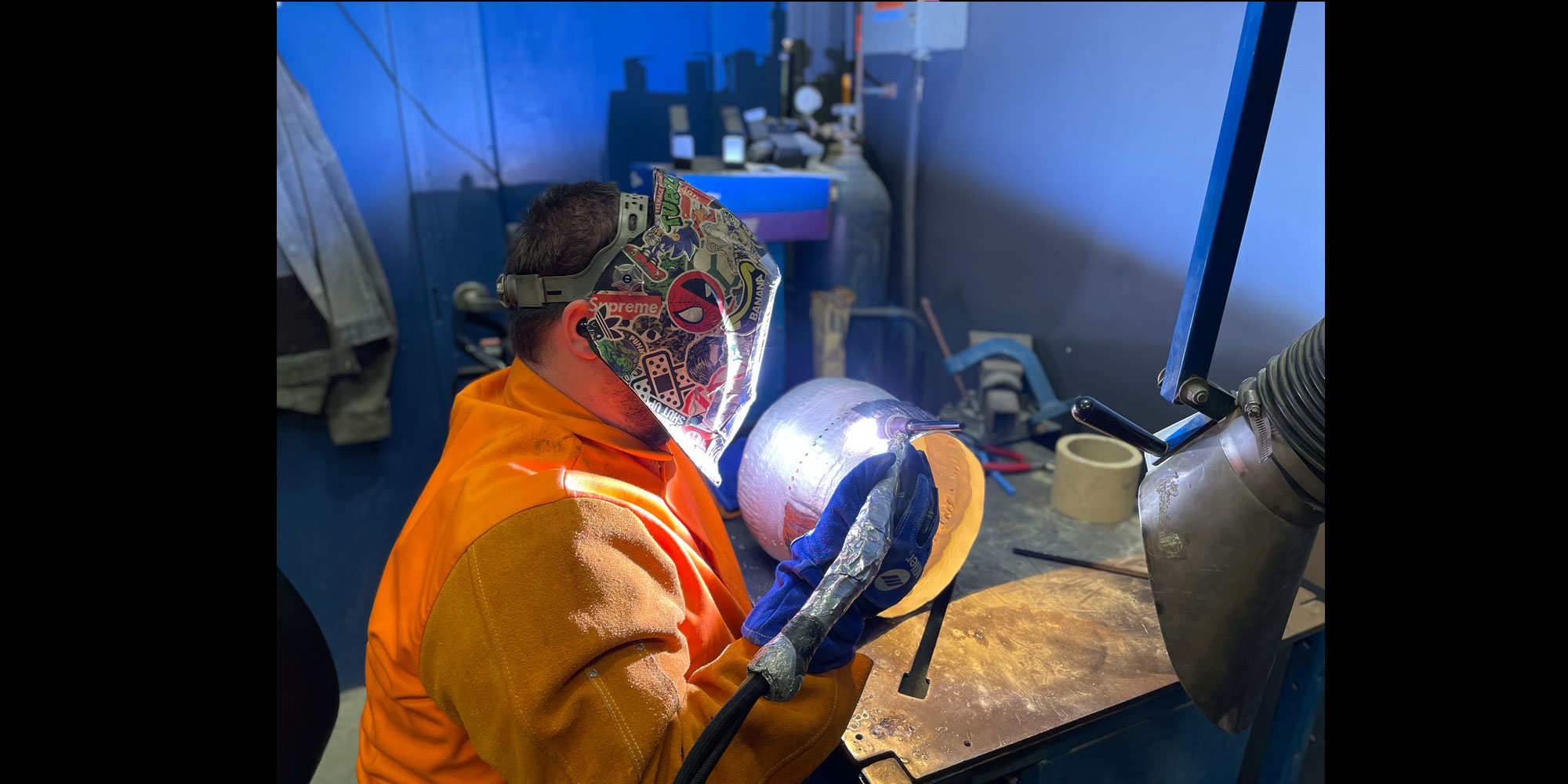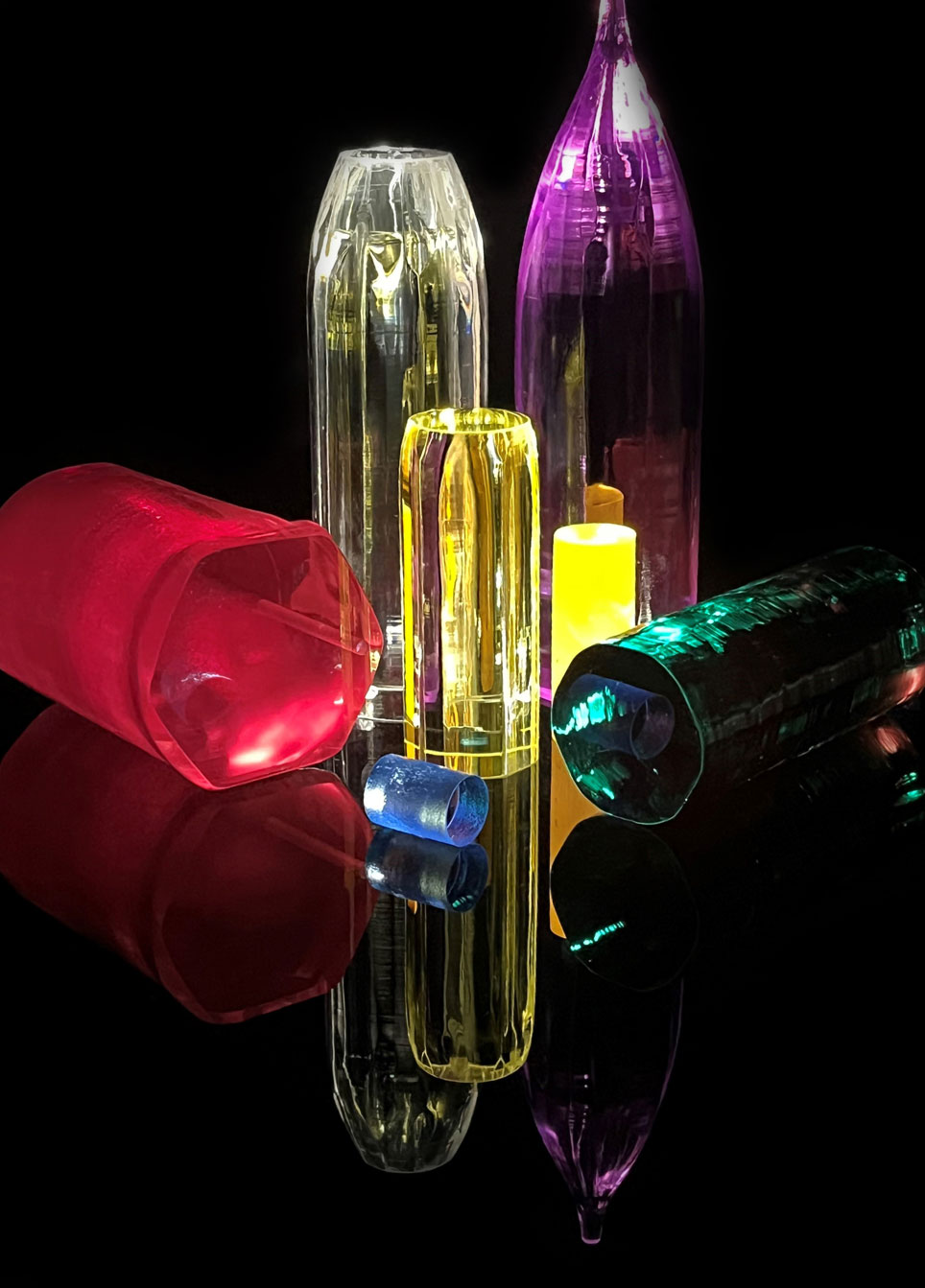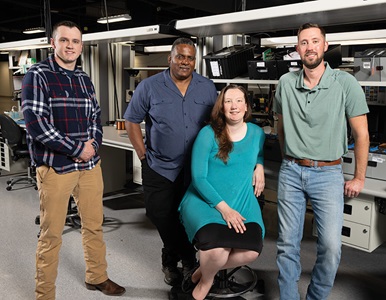For Energetics Engineer Heather — test day — is more exciting than most.
Finding Rainbows in the Fire


By Thomas Gibson and Amanda Collins
Welder Thomas Gibson honed his skills in the U.S. Navy, repairing ship hulls while stationed in Japan. Today, as a welder at Northrop Grumman’s site in Charlotte, North Carolina, Thomas has a hard job, literally: he welds iridium, the second-densest material on Earth, in support of the company’s laser crystal production.
Crystals are a key component in creating certain lasers, but growing these crystals requires melting down rare Earth materials, like rubies and sapphires. This is done using furnaces with temperatures of more than 3,500 degrees Fahrenheit, twice as hot as molten lava.
Your average crucible — the container used for melting — can’t withstand this heat. Instead, the team uses crucibles made of iridium, a rainbow-like iridescent metal with a very high melting point.
The metal is rare — a single iridium crucible the size of a kitchen stockpot can cost $3 million — and, despite its resiliency, flaws develop over time that can impact the crystal growth process or leak scalding liquid. Following strict safety protocols, Thomas and his team use their specialized skills to repair these crucibles, enabling the site to get dozens of uses out of each one.
Pictured right: Crystals have a broad array of medical, defense and industrial applications.
Here is a typical day for Thomas.
6 a.m. My “Monday” is actually a Thursday. The crystal growth furnaces run 24/7 so, to keep the 100 “mini volcanoes” at the site supplied, I work 10-hour shifts from Thursday to Sunday, and my welding teammate, Casey Sanders, covers the other days of the week. I start the day by checking for crucibles that need to be cleaned and repaired before their next use.
6:30 a.m. I first clean out the leftover material from the crucible with an air-powered chisel, then sandblast it. To reclaim every last bit of iridium we ship the sandblast waste to our crucible manufacturer who salvages it to make more crucibles.
8:15 a.m. Next, I inspect the crucible and log the defects, such as cracks, holes or dents. I also measure and weigh the crucible. If a crucible is too thin after a lot of reuses, it has more risk of bulging or splitting in the furnace, so we have to scrap it.
9:30 a.m. I either blacksmith the crucible to manipulate the shape or weld it by heating it with a torch to fill surface defects. It gets pretty hot in the shop because iridium has to be worked at a higher temperature than most metals. It also holds a lot of heat, so we have safety procedures that limit my welding to five minutes at a time. Ventilation helps the crucible cool down faster in between welds, and I also take a few breaks throughout the day, stepping outside for some fresh air.
10:30 a.m. Sometimes I work on crucibles with leaks I can’t see, and I can’t use a pencil to mark where the crack is because it will contaminate the crystallization process. Instead, I do a “heat jet,” heating the metal until it glows orange. The crack heats at a slower rate, so it appears as a dark line on the crucible and I can see it more easily when I get back to the welding table.
11:15 a.m. All morning, I continue repeating the cycle of repair-cool-repair-cool. Having to wait and watch every few minutes is a rhythm I am used to, since I play pool in my off time. Iridium is very brittle, so welding it is a specialized skill that takes time, experience and diligent attention to safety. Most crucibles take a couple days to repair. When I finish one, the crucible gets placed in acid before reuse for about six hours to remove any surface contaminants that would ruin the crystal growth process.
12:00 p.m. Time for my lunch break. My work is challenging and hot but, every day, I leave knowing that my sweat helps make the laser crystal growth process affordable. The crystals that I support have medical, defense and industrial applications that save lives and advance science.


